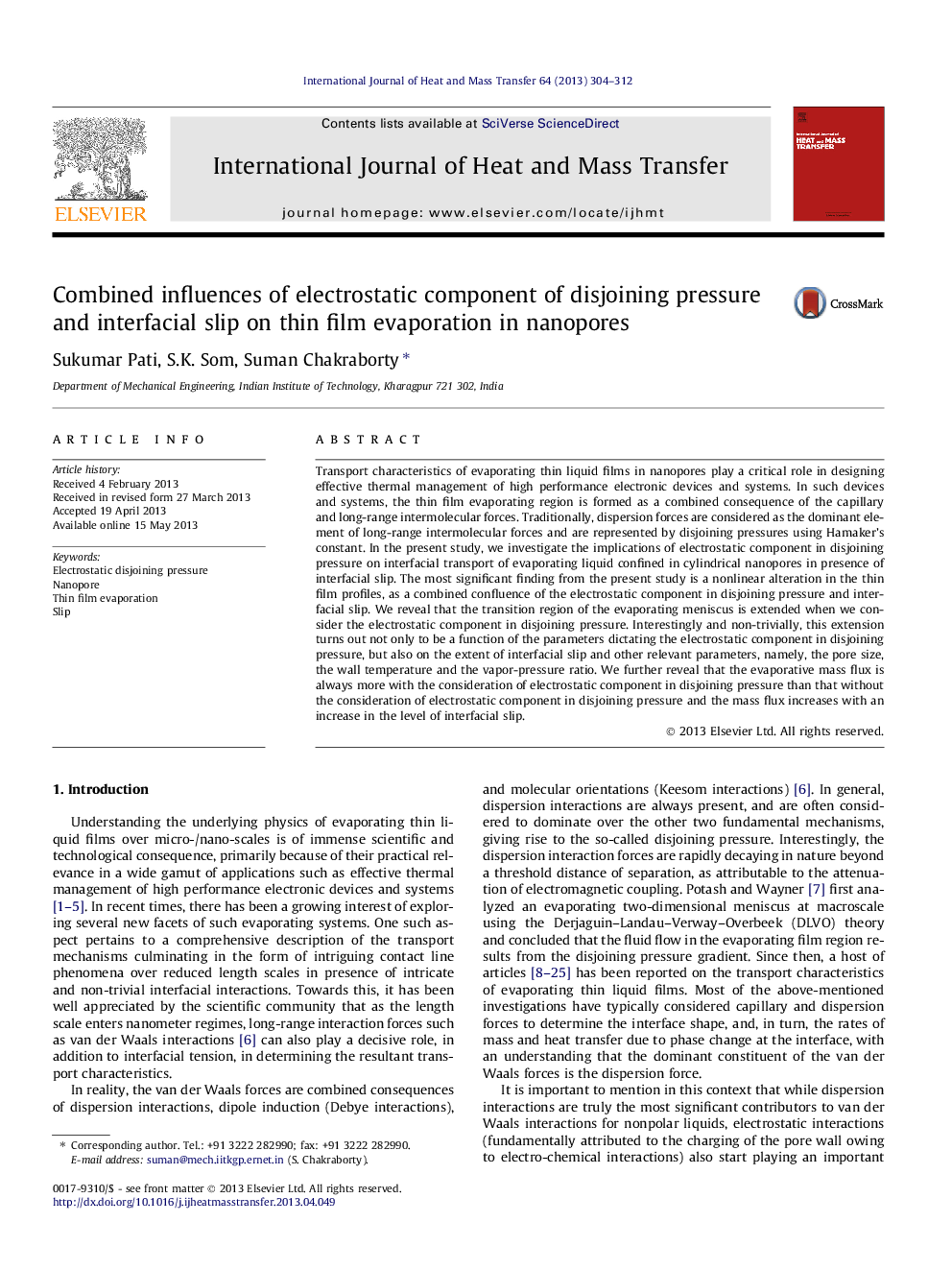| Article ID | Journal | Published Year | Pages | File Type |
|---|---|---|---|---|
| 7058699 | International Journal of Heat and Mass Transfer | 2013 | 9 Pages |
Abstract
Transport characteristics of evaporating thin liquid films in nanopores play a critical role in designing effective thermal management of high performance electronic devices and systems. In such devices and systems, the thin film evaporating region is formed as a combined consequence of the capillary and long-range intermolecular forces. Traditionally, dispersion forces are considered as the dominant element of long-range intermolecular forces and are represented by disjoining pressures using Hamaker's constant. In the present study, we investigate the implications of electrostatic component in disjoining pressure on interfacial transport of evaporating liquid confined in cylindrical nanopores in presence of interfacial slip. The most significant finding from the present study is a nonlinear alteration in the thin film profiles, as a combined confluence of the electrostatic component in disjoining pressure and interfacial slip. We reveal that the transition region of the evaporating meniscus is extended when we consider the electrostatic component in disjoining pressure. Interestingly and non-trivially, this extension turns out not only to be a function of the parameters dictating the electrostatic component in disjoining pressure, but also on the extent of interfacial slip and other relevant parameters, namely, the pore size, the wall temperature and the vapor-pressure ratio. We further reveal that the evaporative mass flux is always more with the consideration of electrostatic component in disjoining pressure than that without the consideration of electrostatic component in disjoining pressure and the mass flux increases with an increase in the level of interfacial slip.
Keywords
Related Topics
Physical Sciences and Engineering
Chemical Engineering
Fluid Flow and Transfer Processes
Authors
Sukumar Pati, S.K. Som, Suman Chakraborty,
